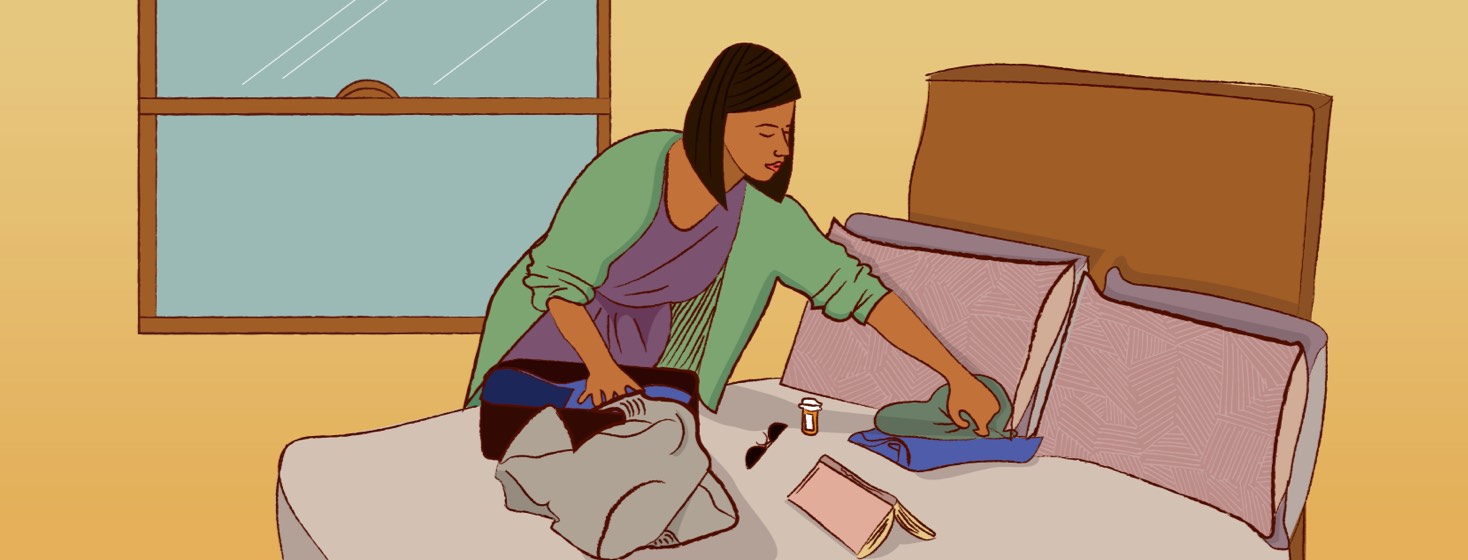Traveling With NMO: Tips
For those who have live with NMOSD for awhile, or for those who have been recently diagnosed, it can be hard to adjust to traveling long distances. Along with long traveling times, our body may have new limitations that we didn't have before we were diagnosed. I thought these tips may provide guidance for those who have a big trip ahead and are stressing about how difficult the journey may be. There are many ways you can make your journey easier.
Getting things in order with brain fog
First, as I have extreme brain fog and memory loss due to my brain lesion and medication, I rely heavily on lists. This could be a list in your notebook or diary, or even on your phone. I tend to use the notes app on my phone as it is the most convenient for me. I will add in everything I need to pack for the journey. This includes, toothbrushes, makeup, socks, chargers and painkillers.
Staying cool throughout the journey
Secondly, for those who have heat sensitivity, it is best to pack clothes that are light and breathable, depending on where you are traveling to. Regardless of the destination, long journeys can cause you to sweat, so it is best to wear something comfortable and breathable. I usually wear leggings or joggers and a breathable top during long journeys as they are soft and comfy. It is also best to pack comfortable shoes or sandals as walking long distances can make your feet swell, and you do not want to worsen the pain by wearing restrictive shoes. Whilst traveling, I will wear slippers that you would usually wear at home and, when I arrive to my destination, I will change the shoes to a pair that match my outfit. It can be helpful packing a spare park of shoes in your bag. You could also take ointments like deep-freeze or creams containing menthol which help you cool down.
Preparing for pain and other side effects
Thirdly, it is essential to make sure you have packed enough painkillers and other medication for the trip. This can be done by asking for a prescription earlier from your doctor and telling them you have a trip planned so they can give you enough. Along with packing painkillers and medication in your suitcase, it is best to also carry them in your handbag or backpack so they are easily accessible whenever needed. Along with that, if you have incontinence issues like many of us with this disease, you should pack enough sanitary pads and undergarments. Accidents can happen and there is no need to feel ashamed.
Planning out accessible places to eat and rest
Fourthly, do your research! Find places that are accessible and have places nearby to eat and other places like toilets and benches just incase something happens. If no food places are near, you could pack fruit and snacks and water in a little bag. I tend to do this every time I go out as I can easily feel faint or dizzy. It is better to be safe rather than sorry.
Take it easy
Fifth, and most important in my opinion, is to not overdo it just because you are on a trip. Being on vacation does not mean your body has this newfound energy just because you are in a different place. Do as much as you can without overworking your body, as afterwards you may need days or weeks to recover from it! Take your time and do not feel bad about not being able to do as much as your peers are doing, or even compared yourself before NMOSD came around.

Join the conversation